
Retaining Walls & Bridge Abutments
Cost-effective alternatives to conventional retaining walls
Earth retaining walls are vital for sites featuring sloping terrain - where maximum developable area must be maintained - or requiring abrupt surface level change. They also provide thrust relief against earth pressure acting on buried structures. Bridge abutments and wing walls provide lateral support to the embankment fill, and also carry the full bridge deck load.
The TensarTech range uses soil reinforcement geogrids securely connected to system specific facing components. TensarTech’s fully integrated systems are easy to install, and provide long-term durability, performance and structural integrity. They also reduce construction costs, as a lower cost alternative to reinforced concrete or piled retaining walls, or by the use of varied backfill materials – including recycled and site-won materials. Additionally, TensarTech wall systems can meet your project’s aesthetic or environmental needs with a wide variety of facing options, including modular blocks, concrete panels, rock filled units or stone or masonry cladding.
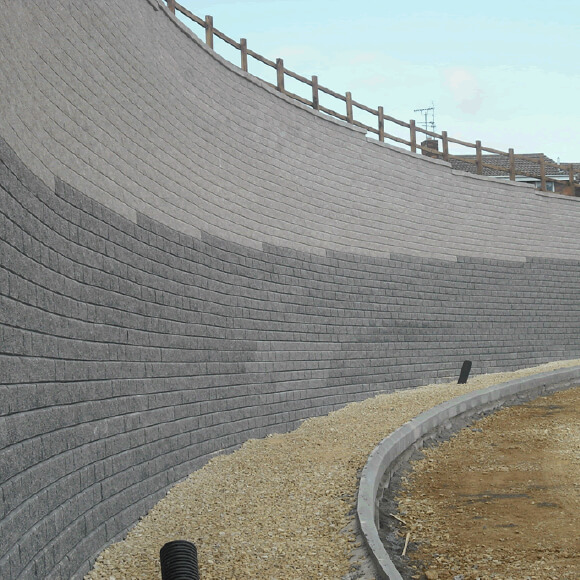
Reinforced Soil Walls
MSE Walls offer a zone of earth fill behind the vertical face , stabilised with reinforcing geogrids laid horizontally back from the face in layers, retaining the fill behind. The external face of the wall is usually concrete block, pre-cast concrete panels or steel mesh. This cladding is non-structural and is supported by the stabilised fill, usually by attachment to the reinforcement geogrids.
Correctly designed reinforced soil wall structures are capable of carrying high surcharge loading, making them suitable for bridge abutments. Tensar’s design software TensarSoil provides this capability and more.
The wide base of the stabilised earth block lowers bearing pressures, reducing or eliminating foundation requirements and significantly reducing costs.
With durable Tensar geogrid reinforcement, a wide range of fill materials may be used, including recycled aggregates, site-won materials and PFA. The use of these ‘lower quality’ fill materials can further reduce costs.
Systems are available with certification for 120 year design life for both retaining walls and bridge abutments.
The modular nature of TensarTech reinforced soil wall systems enables rapid construction using non-specialist skills, in most cases without the need for heavy lifting equipment or supporting formwork.
A wide choice of facing types is available. Selection can be based upon construction cost, service life, aesthetics, or project specific needs and conditions.
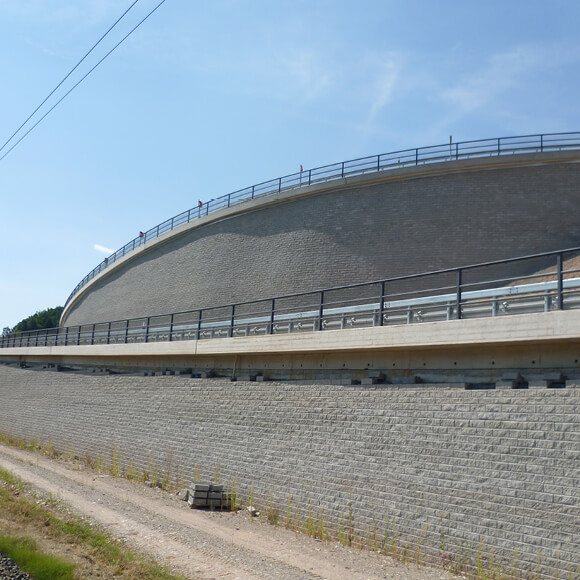
Tiered or Terraced Retaining Walls
High Walls can be constructed in a single plane or they may be stepped back to form a series of terraces. This can be more aesthetically pleasing and allow for vegetation to green and soften the structure. In some cases, the upper tier may be angled back to form a steepened vegetated slope. TensarTech reinforced soil structures are well suited to this type of tiered construction. The design takes account of the face geometry and can reduce costs can reduce compared to single face structures.
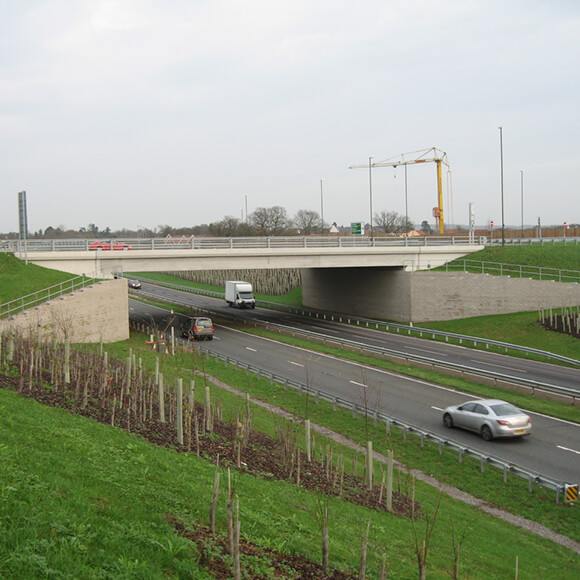
Bridge Abutments
Bridge abutments can be straightforward earth retaining structures supporting the embankment fill only, with vertical bridge loading carried separately on columns and piles. However, it has become more common to support the bank seat directly on the reinforced soil block, transferring all bridge loading into the reinforced soil structure. TensarTech Wall System bridge abutments offer major cost savings and reductions in construction time compared to supporting the bank seat on columns or load bearing reinforced concrete walls.
Load bearing bridge abutments incorporating Tensar geogrid reinforcement have proven to be very effective when subjected to seismic loading, with reduced settlements and structural damage.
Traditionally, sliding bearings have been incorporated below bridge decks to eliminate thermally induced lateral loading from the bank seat. This simplifies design but has high maintenance requirements, with the inherent disruption and costs.
Tensar has developed design techniques for reinforced soil integral bridge abutments where all lateral loads are transmitted directly to the bank seat. Loading is carried by the stabilised soil block, including the cyclic lateral bridge deck loading.
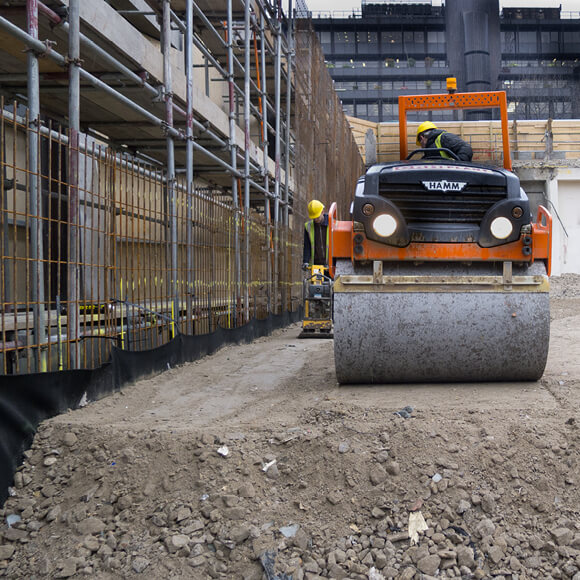
Thrust Relief Walls
Buried structures are subject to lateral loading due to the earth pressure. It is possible to separate lateral earth loading from vertical loading on such structures by the use of thrust relief – or pressure relief walls outside of the buried structure. TensarTech reinforced soil walls are ideally suited to thrust relief, as the stabilised soil block supports all lateral earth loading leaving the buried structure to carry only vertical and hydrostatic loading.
In the same way, thrust relief structures have been utilised to reduce earth pressure acting on old masonry walls or bridge works. In some cases, lightweight aggregates have been adopted for the reinforced fill to minimise bearing pressure behind the protected structure. This approach has been used to protect many existing structures of historical or architectural significance.
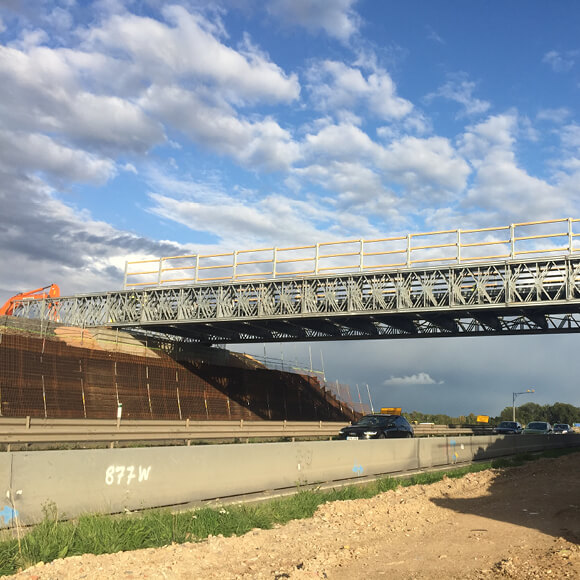
Temporary Earth Retaining Walls
Temporary walls are required for many types of staged construction. Driven pile systems have been the preferred choice for many years, but these systems are expensive, requiring heavy lifting and pile-driving equipment as well as skilled labour for installation.
TensarTech TR2 temporary retaining wall system is a proven technology that allows you to build temporary walls without the challenges and expense of other techniques. With an economical wire-form facing system, lightweight installation equipment and use of unskilled labour, TensarTech TR2 temporary Walls provide a durable, low-cost alternative. These retaining walls are ideal for staged construction, traffic maintenance, haul road bridge abutments and similar projects.
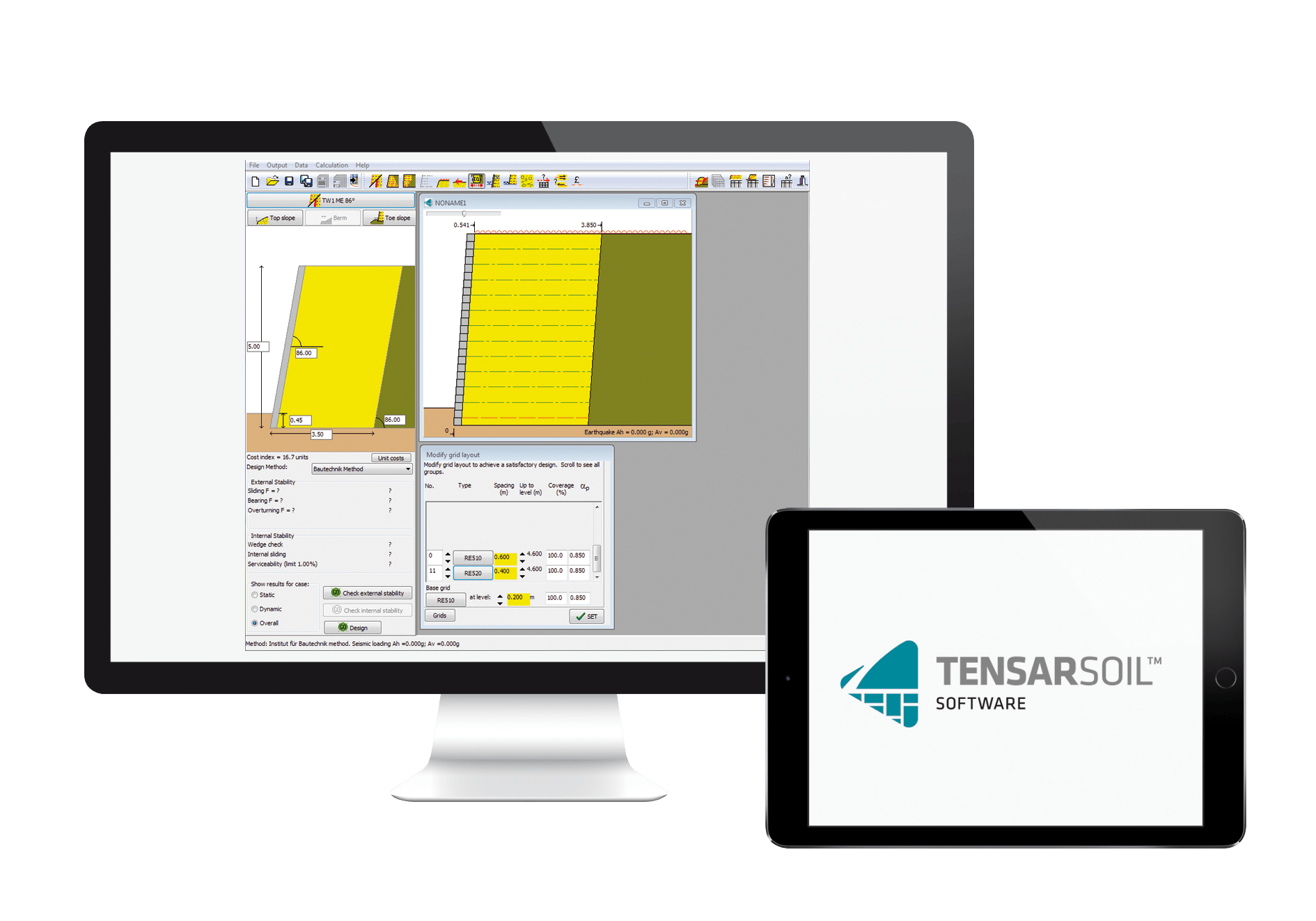



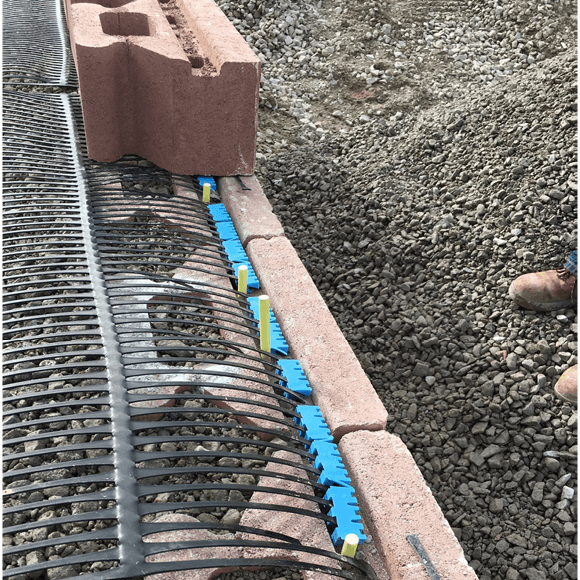
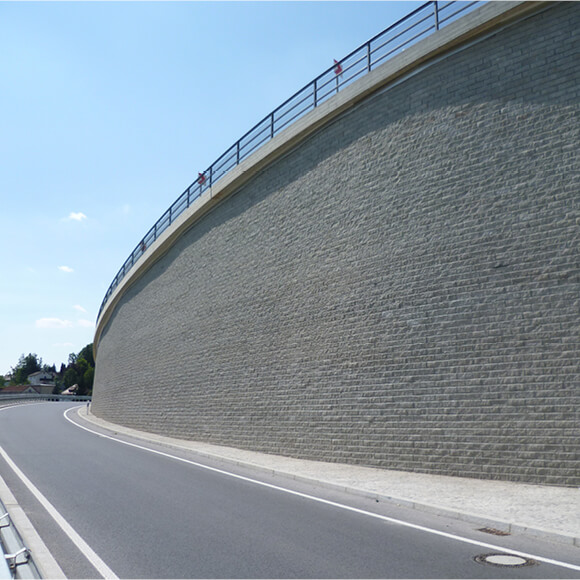
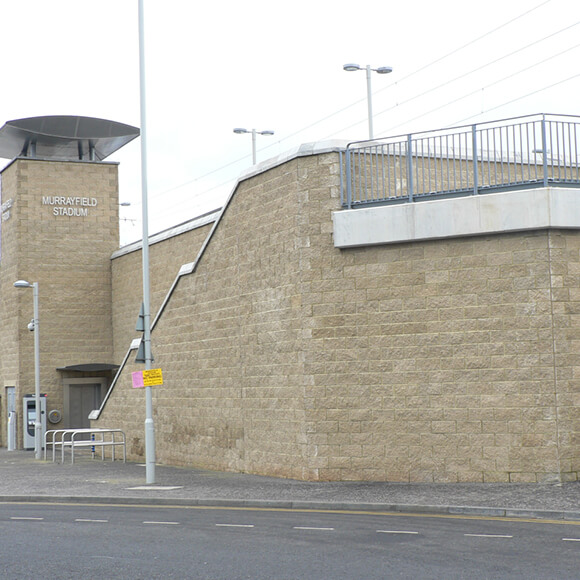

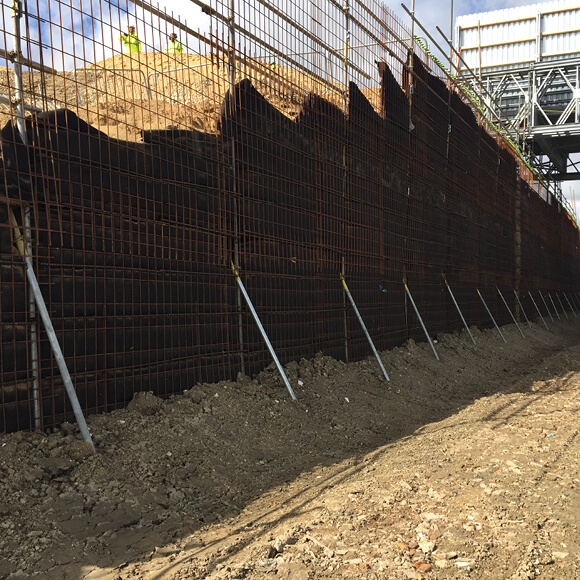
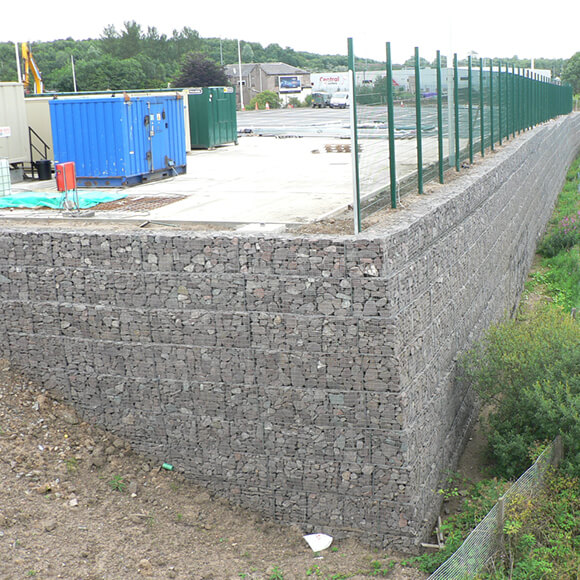
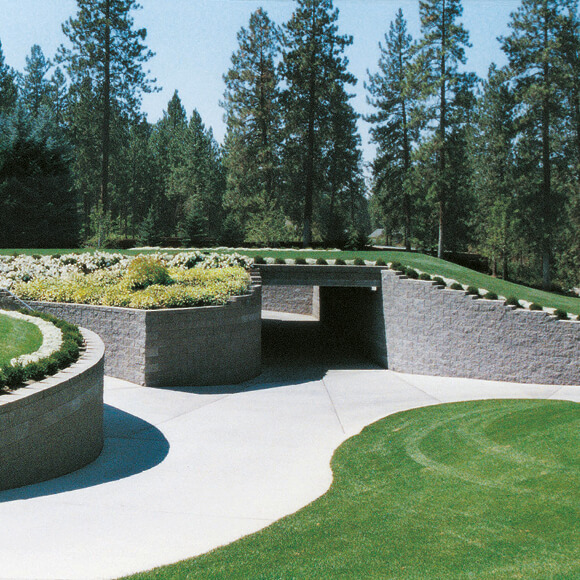
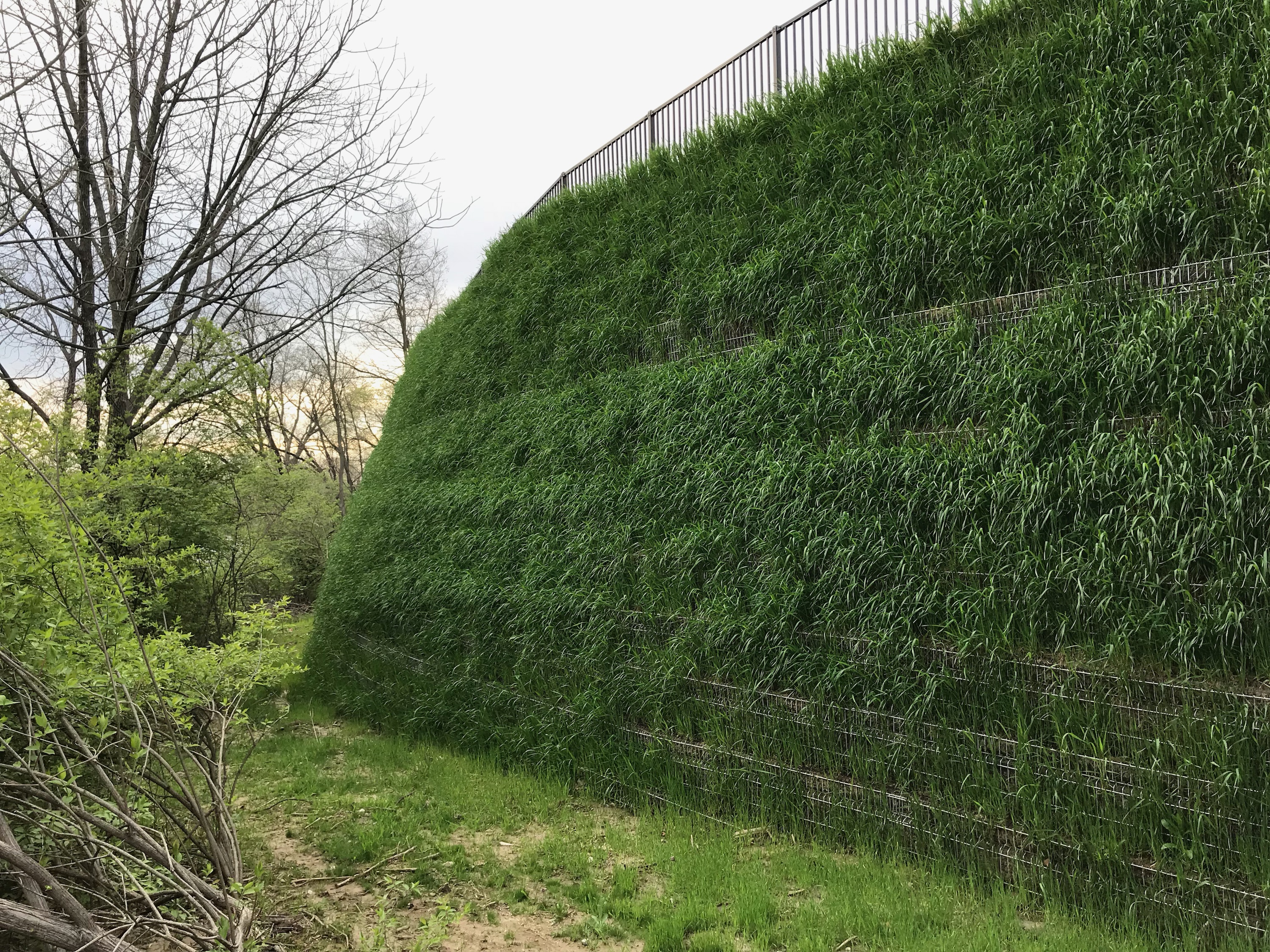
.png)